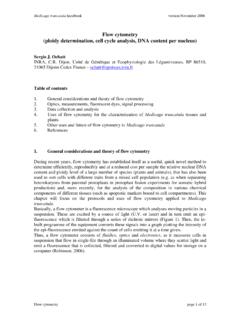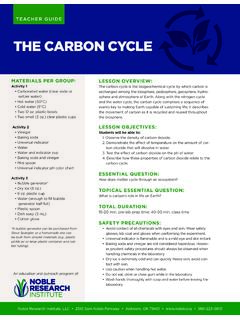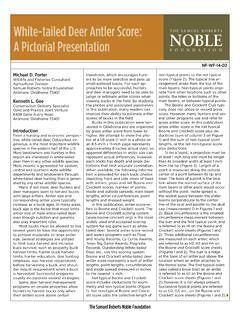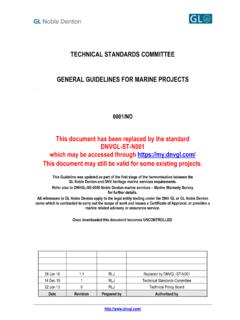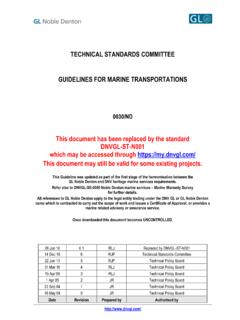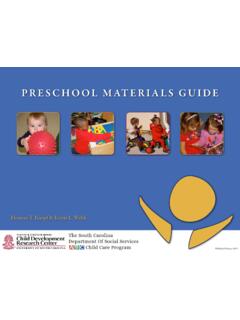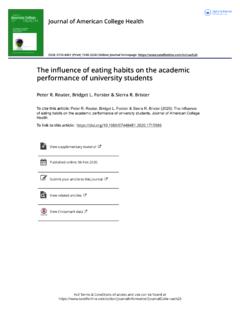Transcription of STRAWBERRY DNA EXTRACTION - Noble
1 Noble Research Institute, LLC 2510 Sam Noble Parkway Ardmore, OK 73401 580-223-5810An education and outreach program of:TEACHER GUIDELESSON OVERVIEW:Deoxyribonucleic acid (DNA) is a molecule that encodes genetic instructions. These instructions guide the development and func-tioning of all known living organisms and many viruses, and are used for building and regulating proteins which build and run an organ-ism s body. Similar to the way a builder uses a blueprint to construct a house, cells use information from DNA to construct an organism. DNA is sometimes called the blueprint for life. ESSENTIAL QUESTION:How is all life on Earth connected? TOPICAL ESSENTIAL QUESTION:How can DNA be extracted from cells?LESSON OBJECTIVES:Students will be able to:1. Learn the simple steps to extract DNA from Construct an explanation for each step of DNA Explain the importance of extracting DNA from the cells of PER GROUP: One STRAWBERRY (frozen work well) 50 mL tube (lysis buffer tube) Pipette 5 mL clear liquid detergent ( , Woo-lite , Ivory, hand soap or other clear liquid detergent) 45 mL water 5 g salt 25 mL ethanol or ice-cold 91% isopropyl (rubbing) alcohol One quart-sized Ziploc bag One coffee filter Funnel Inoculating loop (Popsicle stick, cotton swab, coffee straw or similar instru-ment) 250 mL collection cupTOTAL DURATION:10 min.
2 Pre-lab prep time; 40-60 min. class timeSAFETY PRECAUTIONS: Do not eat or drink in the laboratory. (Ethanol and rubbing alcohol may cause blindness if ingested.) Wear safety glasses, lab coat and gloves when performing the experi-ment. Materials should not be removed from the DNAEXTRACTIONAn education and outreach program of:TEACHER GUIDEN oble Research Institute, LLC 2510 Sam Noble Parkway Ardmore, OK 73401 580-223-5810 Middle School MS-LS3-1 Students who demonstrate un-derstanding will be able to: Develop and use a model to describe why structural changes to genes (mutations) located on chromosomes may affect pro-teins and may result in harmful, beneficial, or neutral effects to the Students who demonstrate un-derstanding will be able to: Develop and use a model to de-scribe why asexual reproduction results in offspring with identical genetic information and sexual reproduction results in School HS-LS3-1 Students who demonstrate un-derstanding will be able to: Ask questions to clarify relation-ships about the role of DNA and chromosomes in coding the in-structions for characteristic traits passed from parents to offspring.
3 Science and Engineering Practices: 1. Asking questions2. Developing and using models3. Planning and carrying out investigations4. Analyzing and interpreting data5. Using mathematics and computational thinking6. Constructing explanations and designing solu-tions7. Engaging in scientific argument from evidence8. Obtaining, evaluating and communicating informationCrosscutting Concepts: 1. Patterns2. Cause and Effect: Mechanisms and explanations3. Scale, Proportion and Quantity4. Systems and System Models5. Energy and Matter: Flows, cycles and conserva-tion6. Structure and Function 7. Stability and ChangeSTRAWBERRY DNA EXTRACTIONSTANDARDS:LAB BACKGROUND INFORMATION:NOTE: This is background information for the teacher to assist in facilitating learning and will be explained to the students after the Explore section. Deoxyribonucleic acid (DNA) is a molecule that encodes genetic instructions. These instructions guide the development and functioning of all known living organisms and many viruses, and are used for building and regulating proteins which build and run an organism s body.
4 Similar to the way a builder uses a blueprint to construct a house, cells use information from DNA to construct an organism. DNA is sometimes called the blueprint for life. DNAGenePrecipitateLysateLipidsFiltrateLy sisProteinKEY VOLCABULARY:An education and outreach program of:TEACHER GUIDEN oble Research Institute, LLC 2510 Sam Noble Parkway Ardmore, OK 73401 580-223-5810 STRAWBERRY DNA EXTRACTIONDNA instructions are divided into segments called genes. All organisms have genes that determine various biological traits. Some of these are immediately visible, such as eye color or hair color, and some are not, such as blood type or musical talent. Each gene provides the information for making a protein that carries out a specific function in the world depends on plants and animals for food, clothing, shelter and fuel every day. These plants and animals are comprised of cells that rely on DNA for their development, functioning and reproduction.
5 In agriculture, scientists evaluate the DNA to find genes that code for specific traits, such as disease resistance, drought tolerance and higher yield, to improve the plants. These improvements benefit you as consumers when you purchase products with improved nutrition, larger size and better taste. In this activity, students will break open STRAWBERRY cells and extract DNA. Some fruits are especially well suited for DNA extractions due to their multiple sets of chromosomes. Strawberries are octoploid, which means they have eight copies of each chromosome. In comparison, human cells are diploid, which means they contain two copies of each this activity, students will learn the simple method of DNA EXTRACTION , be able to explain the rationale of each step, and use simple household chemicals to extract DNA from a EXTRACTION is a fairly simple process. The first step is to create the lysis buffer. Lysis is a Greek word that means to break open.
6 The lysis buffer (water, detergent and salt) breaks open the cells by destroying the fat-ty membranes that enclose the cells as well as the nuclear membranes within the cells. DNA is released into the solution. The salt in the lysis buffer strips away proteins associated with the DNA molecules, and alcohol helps the DNA precipitate out of the solution. The colder the alcohol, the more DNA will precipitate. Chill the alcohol on ice for one hour prior to performing the experiment or place in the freezer overnight. ENGAGE:Give students a STRAWBERRY and let them observe it. On a separate sheet of paper, have students list five descriptive observations about the STRAWBERRY . Have the students do a chain note pre-assessment. At the top of the paper write DNA .. and have the students complete the sentence. Give the students a time limit and have them come up with as many ideas as they can to complete the sentence. This is an opportunity to uncover student misconceptions prior to the lesson.
7 Sample student responses: DNA .. is in cells .. is a large molecule .. makes genes .. makes up people .. codes for proteins (not makes) .. comes from my parentsIntroduction In this activity, you will learn the simple method of DNA EXTRACTION , be able to explain the rationale of each step, and use simple household chemicals to extract DNA from a education and outreach program of:TEACHER GUIDEN oble Research Institute, LLC 2510 Sam Noble Parkway Ardmore, OK 73401 580-223-5810 EXPLORE:Pre-lab Questions:1. Do strawberries contain DNA? Ye s2. Where is DNA found? DNA is found in the nucleus of each What do you think the DNA will look like? Accept all reasonable What barriers must be broken to access the DNA? Cell wall (plants), cell membrane (animals), nuclear :Note: Every activity could be completed by students or could be prepared ahead of time by the instructor. Activity 1: Make Lysis Buffer1. Add 5 g of salt (NaCl) to the empty 50 mL lysis buffer Add 45 mL of water (H O) and 5 mL of clear liquid detergent to the lysis buffer Place the cap securely on the tube and mix gently by swirling or inverting the You have made a lysis 2: Make STRAWBERRY Lysate1.
8 Place the STRAWBERRY in the sturdy plastic Remove all air from the bag and Mash the STRAWBERRY in the bag to a pulp. (Be careful not to break the bag!) *Ask the students if the cells have been broken open. Most will say no, but reinforce that the cells have not been opened or de-stroyed because it takes more than physical force to do this. The cells have simply been rearranged into a different form. Tell the students the definition of lysis (Greek for: to break open). 4. Open the bag and add all of the lysis buffer. 5. Remove the air, seal the bag and mix the STRAWBERRY pulp with the added lysis buffer. *Ask the students if the cells have been broken open. Most students will say no, but reiterate the definition of lysis and that they just added a lysis buffer; ask the question again. Students should now understand that the soap has broken open the lipid mem-brane around the cell and nuclear membrane making the DNA accessible. STRAWBERRY DNA EXTRACTIONAn education and outreach program of:TEACHER GUIDEN oble Research Institute, LLC 2510 Sam Noble Parkway Ardmore, OK 73401 580-223-5810 STRAWBERRY DNA EXTRACTION6.
9 You have made a STRAWBERRY lysate, which is lysed STRAWBERRY cells, meaning that the cells have been broken open. Note: As an option, the instructor can mix all of the components of the lysis buffer and the alcohol to a bag WITHOUT the STRAWBERRY to emphasize the importance of a control and to show that the extracted DNA came from the STRAWBERRY and was not due to a chemical reaction between the lysis buffer solution and the alcohol (added at Step 4).Activity 3: Filter the STRAWBERRY Lysate1. Place the coffee filter into the funnel, and place the funnel into the collection cup. (Note: The instructor should demonstrate how to properly place the filter in the funnel.)2. Pour the STRAWBERRY lysate from the bag into the The liquid that drips from the funnel into the collection cup is called a To speed up the process, pick up the filter from the top and gently squeeze the bottom of the filter. 5. The filtrate includes the STRAWBERRY 4: Visualize the STRAWBERRY DNA1.
10 Remove the funnel from the collection Add 25 mL of ethanol slowly to the collection cup by pouring down the Observe the interface between the ethanol and STRAWBERRY lysate layer. The DNA will begin to precipitate out of the STRAWBERRY lysate. Note the appearance and texture of the DNA. A precipitate is an insoluble compound that forms when two solutions Collect the STRAWBERRY DNA using the inoculating : (SEE LAB BACKGROUND)The Lab Background information from the Teacher Guide is repeated in the Explain section of the Student Guide. Below is additional information to help aid order to improve plants and animals, agriculturalists have been studying genes and DNA for many years. The process of choosing the best or most desirable traits from each generation and selecting those individu-als to breed together is the basis of agriculture. It has allowed scientists to create plants and animals that are more disease resistant and drought tolerant; produce more offspring; have better mothering ability; and have higher quality meat, eggs or :Optional Extension Activities Use varying concentrations of alcohol (50 percent to 100 percent) to determine how ethanol concentra-tion affects the yield of DNA.
